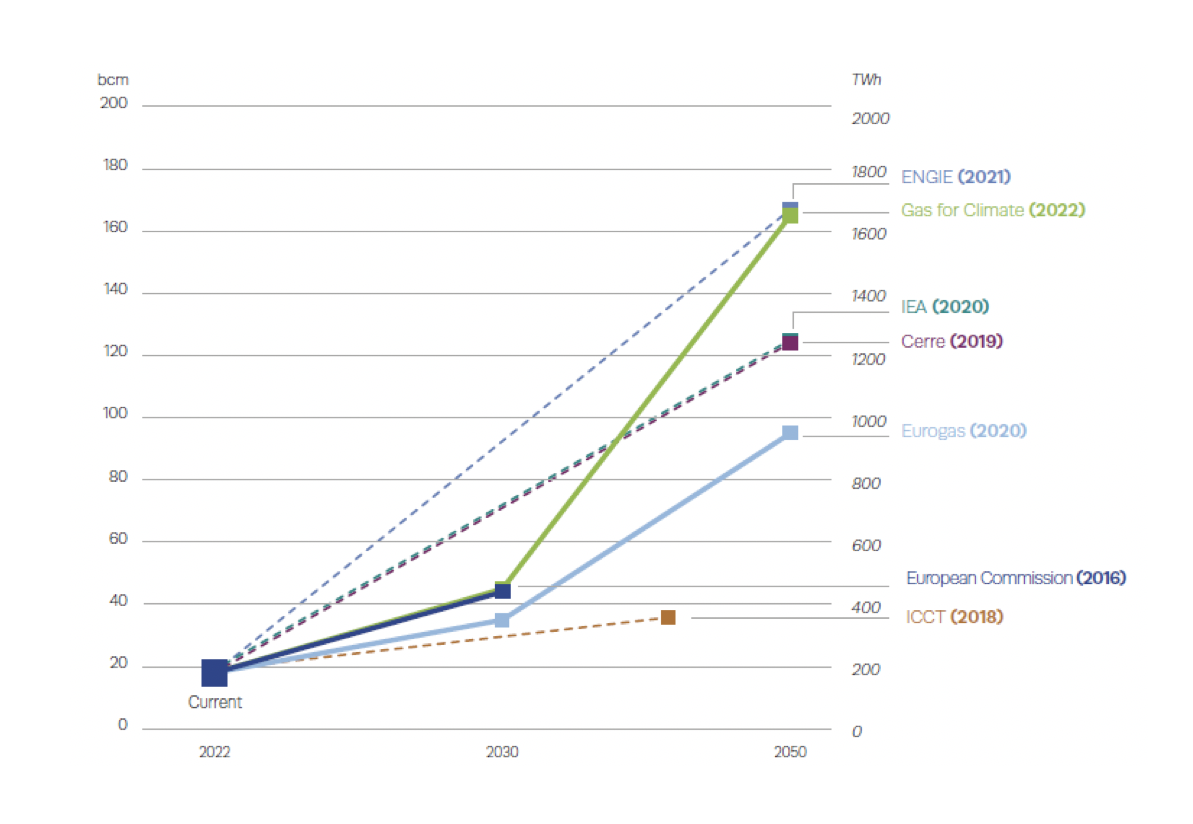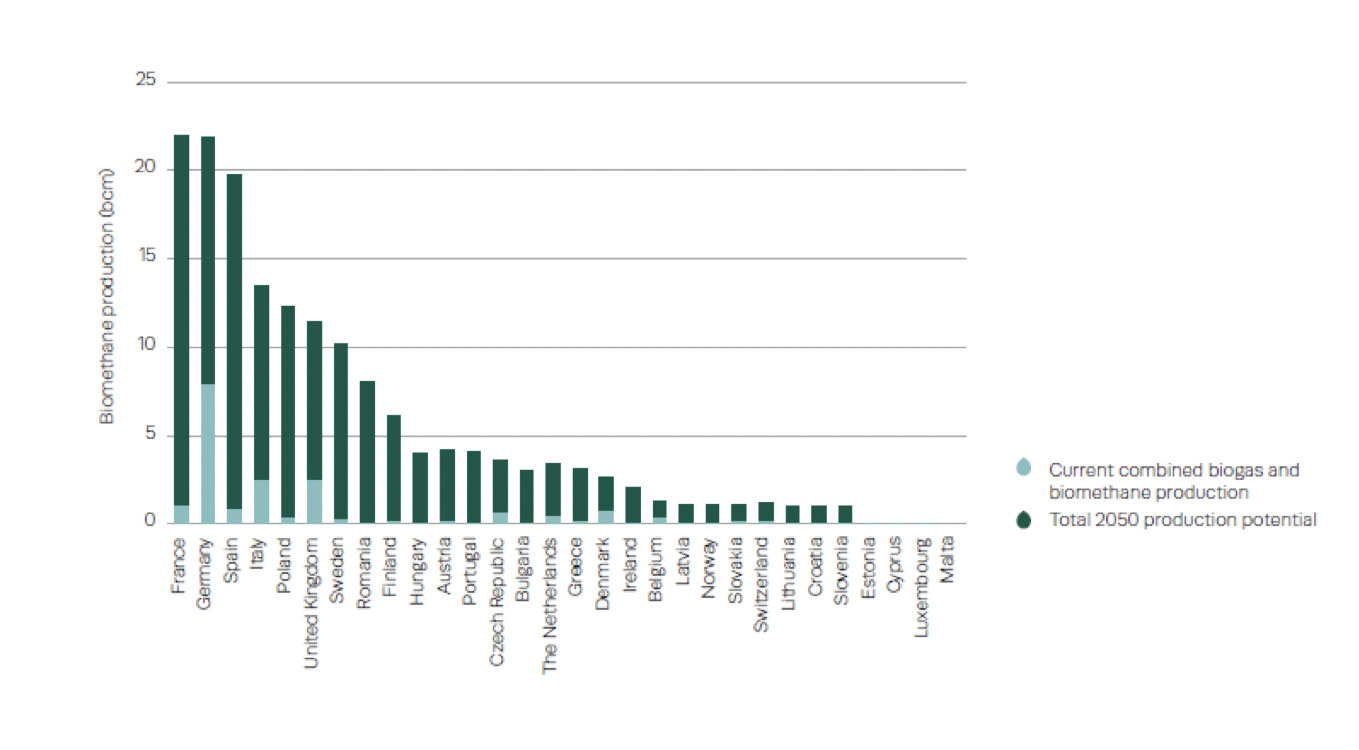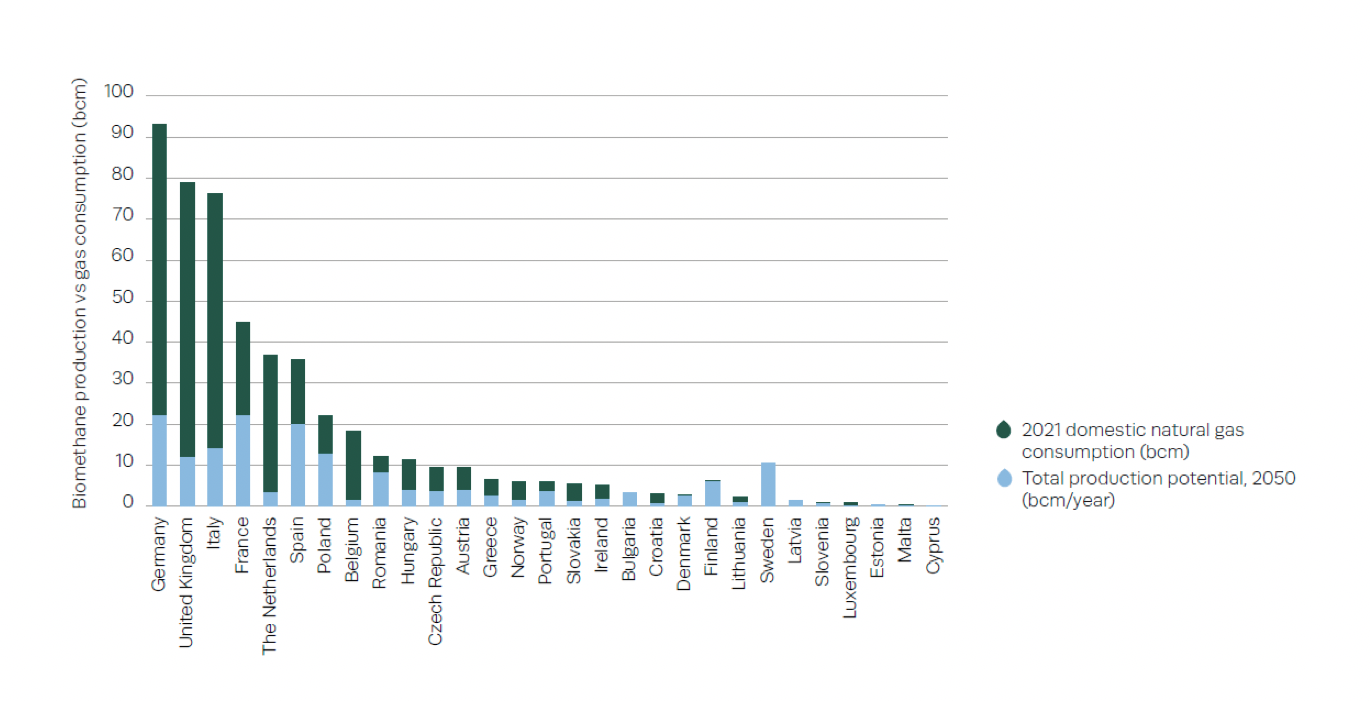Prospects for biomethane production growth in Europe and how much natural gas can be replaced?
Estimated production volumes
There are several studies on the potential production of biogas and biomethane in Europe by 2030 and 2050. Despite some objective differences in methodology and assumptions between them, most studies come to similar conclusions. There is a consensus that by 2030, the biogas and biomethane sectors in Europe together will be able to more than double production: from 18.4 billion m3 in 2021 to 35-45 billion m3 in 2030. By 2050, production may increase fivefold, reaching 165 billion m3.

Natural gas replacement
The potential production, which according to calculations will be achieved by 2050 (up to 165 billion cubic meters), is significant since the consumption of natural gas in the EU in 2021 was 412 billion m3. Thus, the biomethane production potential by 2050 is up to 40% of gas consumption in the EU in 2021. If we take into account expert assessments, the total demand for gas will decrease to 271 billion m3 in 2050, that is, biomethane will be able to cover up to 61% of gas demand.

Reduction of EU dependence on Russian gas
The level of dependence of the EU on natural gas imports in 2021 was 82% (338 billion m3 were imported), and the dependence of 15 member states on natural gas exceeds 90%. The main source of gas for the EU was the Russian Federation (137 billion m3). Given the above figures, it is clear that increased biomethane production in Europe will have a significant impact on reducing dependence on gas imports.
Industry leaders
The countries with the highest production potential by 2050 are France (22 billion m3/year), Germany (22 billion m3/year), Spain (20 billion m3/year), and Italy (14 billion m3/year). Some countries have already reached a large part of their production potential by 2050, such as Germany (36%), Denmark (28%), and the United Kingdom (21%).

The potential of Ukraine
We will remind that, according to UABIO, the potential of biomethane production in Ukraine is at least 10 billion m3/year. However, this assessment does not take into account the possibility of biogas production from cover crops, as well as the use of thermal gasification of woody biomass to obtain gas synthesis followed by its methanization.
Source: European Biogas Association.


